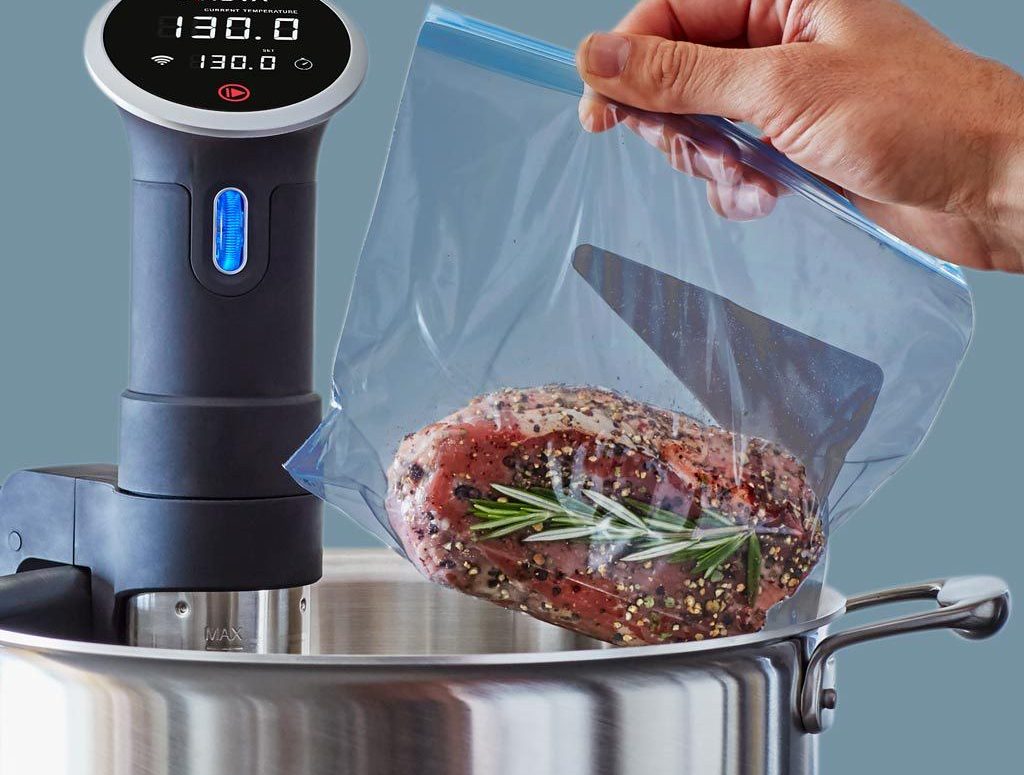
When my husband asked for a sous vide cooker for Christmas a few years ago, I definitely needed to Google it. I learned that sous vide (pronounced “soo-veed,” French for “under vacuum”) is a cooking method where food is placed in a sealed bag, immersed in a bath of water, then cooked to a precision temperature. Even after I figured out just what the heck a sous vide was, I was skeptical about whether we’d actually use the thing. But, knowing my husband is hard to buy for, a specific suggestion like this was just what I needed to check off his holiday list, and I found one on sale online.
That was about four years ago, and our sous vide precision cooker remains the most reached-for tool in our small-kitchen-appliance arsenal. Even ahead of the slow cooker and Instant Pot, the sous vide is our go-to for prepping and cooking weeknight family dinners.
Our sous vide cooking setup is simple — it includes the sous vide precision cooker, a covered plastic tub filled with water, and the packaged meat or fish. After our first few months of using this technique on a regular basis, we upgraded our setup to a larger tub with a specialized lid to minimize heat loss and deter prying toddlers and cats.
I buy our meat in bulk when it goes on sale and then portion out pieces before freezing using a vacuum bag sealer. When meal prep time comes, I can just throw the bag in the cooker and go. This is even easier for proteins that come pre-sealed right from the store, including my favorites, like sealed pre-seasoned pork tenderloins and frozen salmon. Just be sure to check the seal and type of plastic so you don’t end up with a waterlogged mess (more info and tips on that here). Recently, I discovered these silicone re-usable sous vide bags, which are a great, eco-friendly alternative to disposable plastic bags, and I am excited to try them out.
For our family, the sous vide method allows us to cook meat and fish in a passive way, and in a way that works around our busy schedule. Since the cooker maintains a precision water temperature to cook food, it can be set up hours ahead of time with no worry about overcooking. I can start the sous vide in the morning before I begin my work day, or on my lunch break, or an hour ahead of dinner (the minimum cook time for most items) — and my food is cooked perfectly every time.
We use our sous vide to cook nearly all of our meat, which means our night-of dinner prep usually just includes pulling the meat out of the cooker, then simmering it in a jarred sauce (tikka masala is my go-to), throwing it in a stir fry (with fresh or frozen veggies), or (my personal favorite) crisping it up the outside with a crème brulee torch. Although the sous vide doesn’t do all of our cooking for us, it takes so much of the stress and prep out of making dinner, especially during the week.
It’s important to note that I am absolutely not a skilled cook. But this method has allowed us to serve some pretty impressive dinners, even on rushed weeknights. The sous vide is an awesome tool that helps make prepping family dinners fit our busy schedules.












